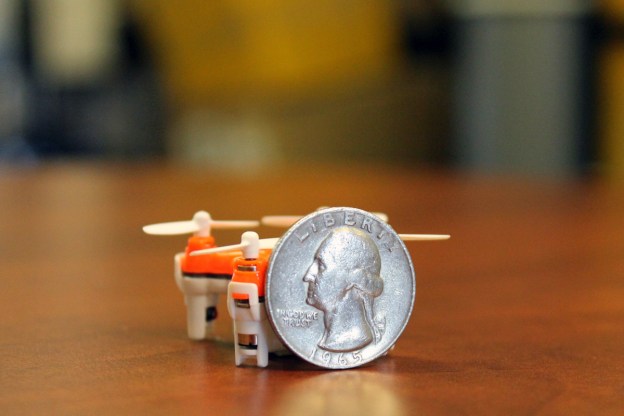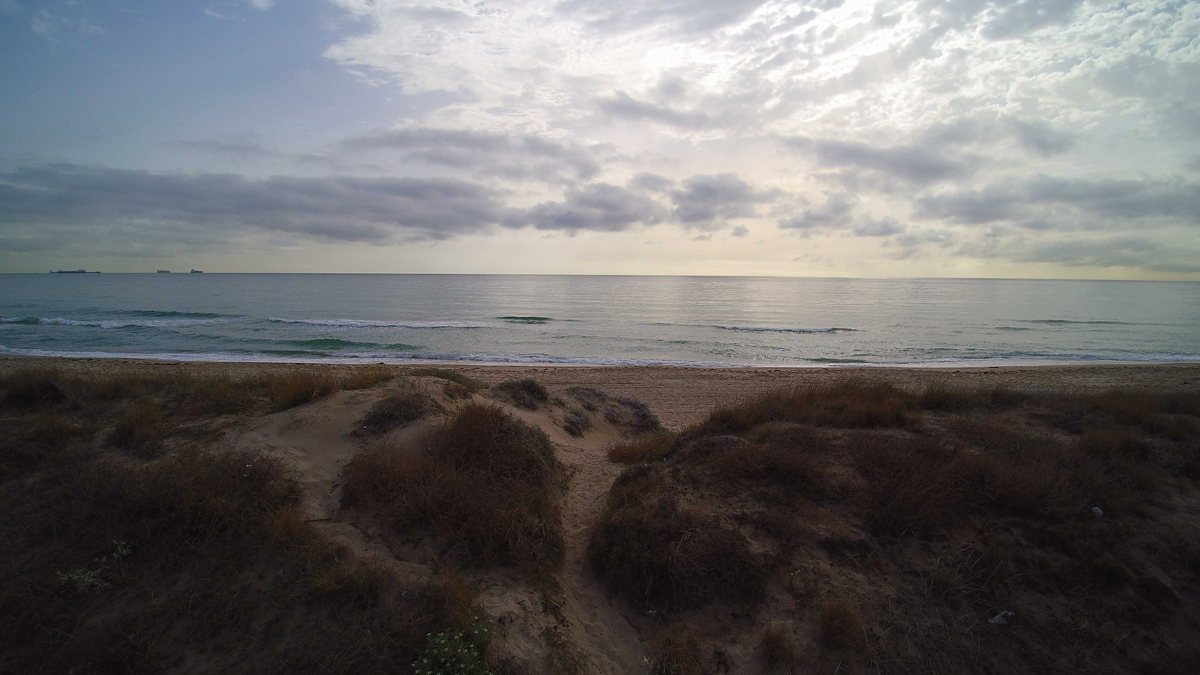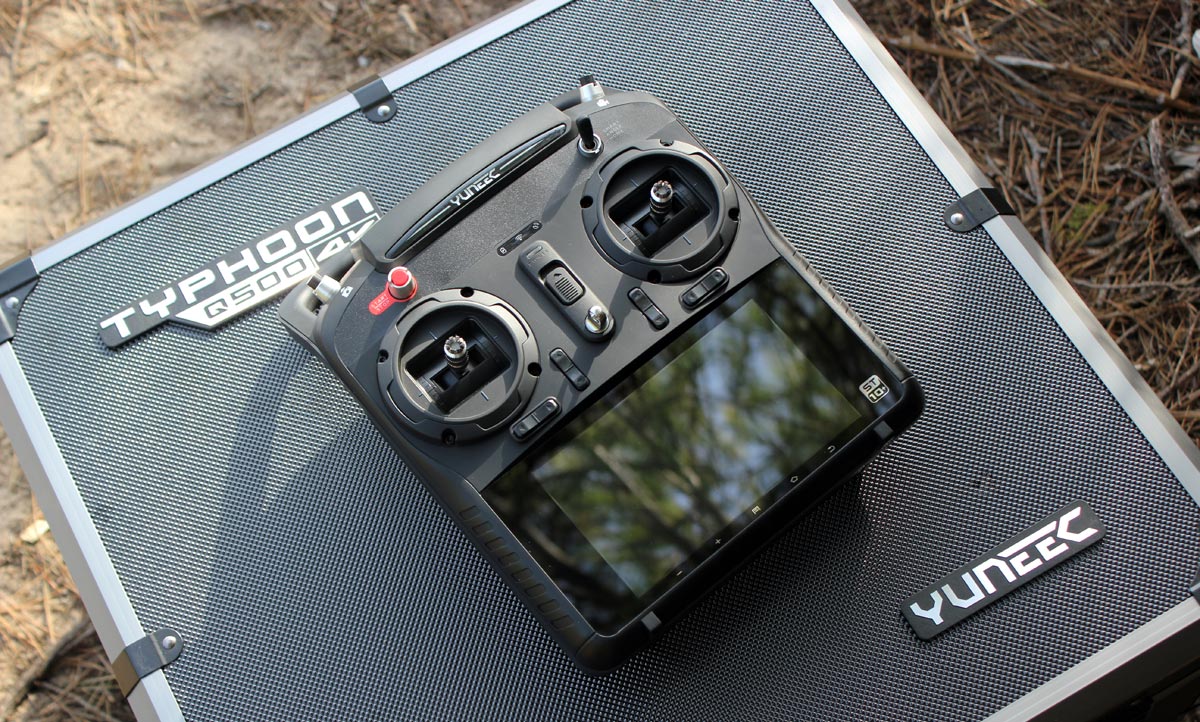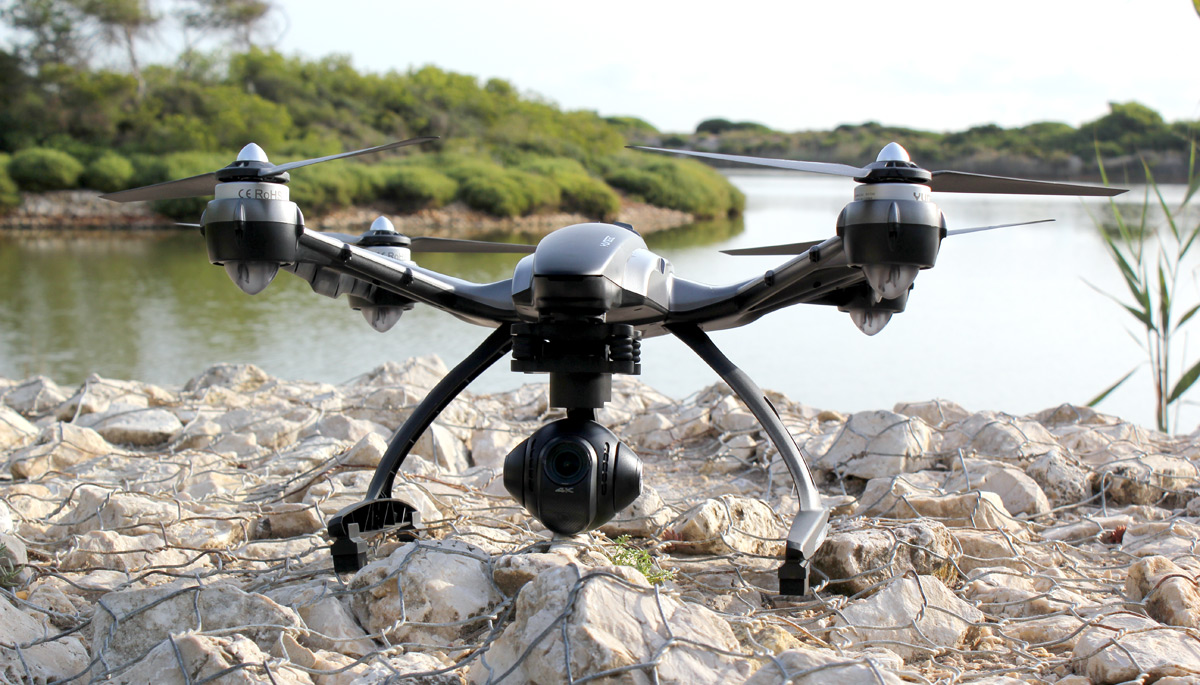New Product
DJI Watersports?
Launch of silent drone aims to advance the film industry
MEGHAN LAWRENCE/FAIRFAX NZ

Howick brothers Mat Rowe and Seamus Rowe with the beginnings of their drone design. The third brother Shaun Pentecost, 35, who couldn’t make it along for the photo, is looking after the drone’s coding.
Three inventive brothers have been awarded $10,000 to design a new drone that could revolutionise the film industry.
Seamus and Mat Rowe and their brother Shaun Pentecost, all from Howick in East Auckland, are one of six teams to make the finals of the 2015 Callaghan Innovation C-PRIZE competition.
The competition is centred around producing the next generation of unmanned aerial vehicle (UAV) technology that can be used in big screen productions.

Seamus Rowe soldering together parts of the drone.
The brothers decided to take on the challenge of creating a drone that could not only film, but also record spoken dialogue with very little unwanted noise.
They hope their combined experience in electrical engineering and biotechnology will help them produce a marketable drone.
Seamus, 22, says there are a lot of drones already on the market, but the sound they make is horrible.
“The whole goal of this project is to try and make the drone quieter,” the Manukau Institute of Technology electrical engineering student says.
“At the moment the sound they produce is about 80 decibels, which is like shouting, so you can’t record audio from them at all because they are way too noisy.”
Mat, 39, says it is not about building a drone from scratch, but trying to create technology that will improve them.
“There are a number of ways of doing that but we have chosen the paths of active noise cancelling and actually making the drones themselves quieter,” he says.
Ad Feedback
The design includes 3D printed shrouding which will muffle the sound of the propellers, as well as technology that will record dialogue while removing any unwanted noise.
The brothers have four months to complete their prototype and are competing for the chance to win $50,000 and a trip to exhibit at the NAB trade show in Las Vegas.
The winners will also receive support from Callaghan Innovation and New Zealand Trade and Enterprise to release the drone on the international market.
It has also been a great way to launch their own technology discovery business, Dotterel Technologies, Mat says.
“It has been good to be given a start. If we were to win we would push it more towards a commercial product and look to expand into other industries such as agriculture,” Mat says.
The winner of the C-PRIZE competition will be announced in late November.
Go to cprize.nz for more information.
http://www.stuff.co.nz/technology/gadgets/71243859/launch-of-silent-drone-aims-to-advance-the-film-industry
Why people are angry with DJI for launch of Phantom 3.
Ouch…
The world’s smallest drone gets ready to take flight
 Image Source: Axis Drones
Image Source: Axis DronesDrones have gone from geeky dream to mainstream gadget in a shockingly brief amount of time. The remote-controlled airborne devices were once expensive tools reserved for businesses with a real need for them. Construction companies, for example, used them to survey and film sites, while video companies used them to capture aerial footage at a fraction of the cost of renting a helicopter.
Today, you can walk into any toy store, spend less than $50 and leave with a recreational drone in your shopping bag.
Drones have flooded the market to the point that it’s getting difficult to distinguish between them, but one company is getting ready to launch a drone that you won’t soon forget: Meet the world’s smallest quadcopter.
Crowdfunded products often fail to actually make it to release, but the Aerius drone by Axis Drones was successfully funded some time ago. It is now less than a month away from launch, and production has apparently gone so well that the device can still be preordered for delivery ahead of the holidays.
How small is the world’s smallest quadcopter drone? As you can see in the photo below, it’s not even as tall as a quarter standing on its edge.

Here are some of the Aerius drone’s key features, as listed on the Axis Drones website:
- The NEW World’s Smallest Quadcopter ® – 3cm x 3cm x 2cm
- Ultra-Compact 2.4 gHz Controller with Drone Storage/Transport Compartment
- 5-7 Minute Flight Time per 15 Minute Charge via USB Cable; 3.7v 80mAh Battery
- 2-Speeds Pre-programmed for Desired Level of Flight Sensitivity
- Headless Mode Allows for Beginners to Ensure Flight Orientation
- 6-Axis Gyro-Stabilization Keeps Drone Stable and Centered
- 360 Degree Rotational Yaw Allows Users to Seamlessly Adjust Orientation
- Pre-programmed “Trick-Mode” Algorithm Provides Amazing Flips and Rolls!
- Bright LED Colored Lights for Night Flight and Drone Orientation
- Available in 4 Color Choices and Controller Accents
- Super Portable, Fun, Unique and a Great way to Practice Flying Drones Indoors!
The Aerius is so small and portable that it can actually be docked inside the remote controller when it’s not being flown.

Here’s a video of the drone in action, and you can also see it doing some flip tricks:
The Aerius drone is set to start shipping on September 30th, and it costs $35 to preorder on Axis Drones’ website.
http://bgr.com/2015/08/18/drone-for-sale-worlds-smallest-aerius/
DJI’s Phantom 3 has it’s biggest rival in YUNEEC’s 4K Typhoon Q500
We’d understand if you’re not familiar with Yuneec; we’ve only written about its products twice. However, it’s fairly well-known in the quadcopter world, and best described as a direct rival to DJI. When I reviewed DJI’s 4K Phantom 3 Professional drone ($1,259), a reader asked if we could compare it to Yuneec’s rival Typhoon Q500 model (around $1,100, but with a lower-res 1080p camera). Days later, Yuneec announced an updated Typhoon with 4K shooting for $1,299, making the comparison much easier. It only seemed fair to grant our reader’s wish, and check out what the new Typhoon had to offer.
The similarities between DJI’s and Yuneec’s consumer quadcopters are many. Both have 4K cameras with stabilizing gimbals. Both are “ready to fly,” which mostly means there’s no assembly required; just charge and go. Both are easy for beginners to control, and both offer first-person view (aka FPV), or the ability to see what the camera is seeing in the air in real time, usually via the transmitter/controller. There are other products that offer a similar feature set, but DJI and Yuneec have done a good job packaging them in ways that appeal to new flyers and hobbyists alike.
There are also some significant differences and on paper, at least, many of them are in Yuneec’s favor. Despite being slightly more expensive, the Typhoon offers better value. The $1,299 4K version is available with a carry case (you’ll need to buy one for your Phantom). It also comes with two batteries versus one on the Phantom. Then there’s the transmitter, which has a built-in touchscreen display. This is how you view what the Typhoon’s camera sees (you can also use it to access settings). In contrast, DJI users need a phone to do this, this approach works well, but is one more thing to bring along/charge. The last, and perhaps coolest extra with the Typhoon, is the Steadygrip, a hand-held mount for the 4K camera. Detach it from the drone, clip it to the accessory and you can film smooth video on the ground, too. DJI’s working on a similar product, but it’s not available yet, and won’t ever be in the box of the Phantom 3 (the camera is non-removable).

You’re also getting more flight features with the Typhoon. The ground station has GPS in it (actually, most quadcopters do, but not always the transmitter). This means the Typhoon has options like “follow me” and “watch me,” which Phantom 3 doesn’t have right now (but some features are coming eventually). So, the Yuneec is the one to get, right? Maybe. The real test is taking it up in the air and shooting some video. Which is, of course, what I did.
I’ll preface my impressions by stating that I learned to fly on a Phantom, and have flown one for many hours, so this is what I am used to. Yuneec made the Typhoon pretty easy to fly. I had a few minor wobbles the first time, but this might be because of my prior Phantom experience. One example is that, by default, the Typhoon won’t fly within 26 feet of you (or, really, the transmitter).
This caught me off guard when I first tried to land, as I’m used to bringing the Phantom in real close, and sometimes “catch landing” (getting it low enough to hold the landing gear, and make it think it’s on the ground). I had the Typhoon above water, and it wouldn’t come nearer. I had to walk backward far enough to be able to land it on solid ground, and not in an ideal spot (see the photo at the top of this article). The same problem can catch you out mid-flight, too. It’ll suddenly stop moving as it hits the exclusion zone around you. I get it; it’s a safety feature (and one you can turn off).

The Typhoon’s biggest problem in the air, I found, was that it’s not as responsive as the Phantom. DJI’s consumer product is quite a bit smaller, and responds quickly to any touch on the controls. You can throw it left to right quite sharply, and it’ll visibly pitch (but hold its position), and it manages to do so while keeping the camera steady — though if you really throw it, the landing gear/propellers can get in the shot. The Typhoon felt more sedate. Not sluggish, but less immediate. You can control its speed, but that doesn’t change the general responsiveness. Some might say this is a benefit, since I only once got propellers in the shot. But I do prefer the tighter feel of DJI’s setup.
What the Typhoon does have going for it is excellent battery life, so you get more time in the air. On average I got 20 minutes before it would start warning me to bring it home. The Phantom 3 starts complaining between 15 and 17 minutes, I’ve found. It might not seem like a big difference, but those extra few minutes feel like hours when you’re behind the sticks. One minor thing: I’ve never been a fan of how the Phantom 3 looks, but I like the Typhoon even less. As one colleague put it, it looks like it should fire Nerf bullets. It’s a little… on the boyish side. The Phantom 3 isn’t handsome, but smaller and more unthreatening.
Most important for many people will be the quality of the camera. The quadcopter is going to be secondary for customers that are interested in the aerial video first. Here, I think DJI wins. The camera on the Typhoon is pretty decent, but it reacts to different light conditions with mixed success. In the sample video, you can see the difference with the direct sun in the opening clip (the second clip is just moments later, without the sun in shot), or spot the color/temperature of the ground change as I adjust the camera pitch between the 1:50 and 1:56 minute mark. On a positive note, there’s very little fish-eye curving going on, and the results are generally pleasing. But, between the two, the Phantom 3 Professional appears to have the edge.
With more time, I might get to love the Typhoon a bit more, who knows. Right now, though, I’m still leaning toward the Phantom 3. The Typhoon definitely offers more value, and the extra flight features will appeal to some people. But, if your priority is video and photos, or ease of flying, or both, the Phantom 3 steals it.
http://www.engadget.com/2015/08/16/yuneec-4k-typhoon-drone//
H2O Aviax – Waterproof Drone Review
Exploring the Northern Lights







